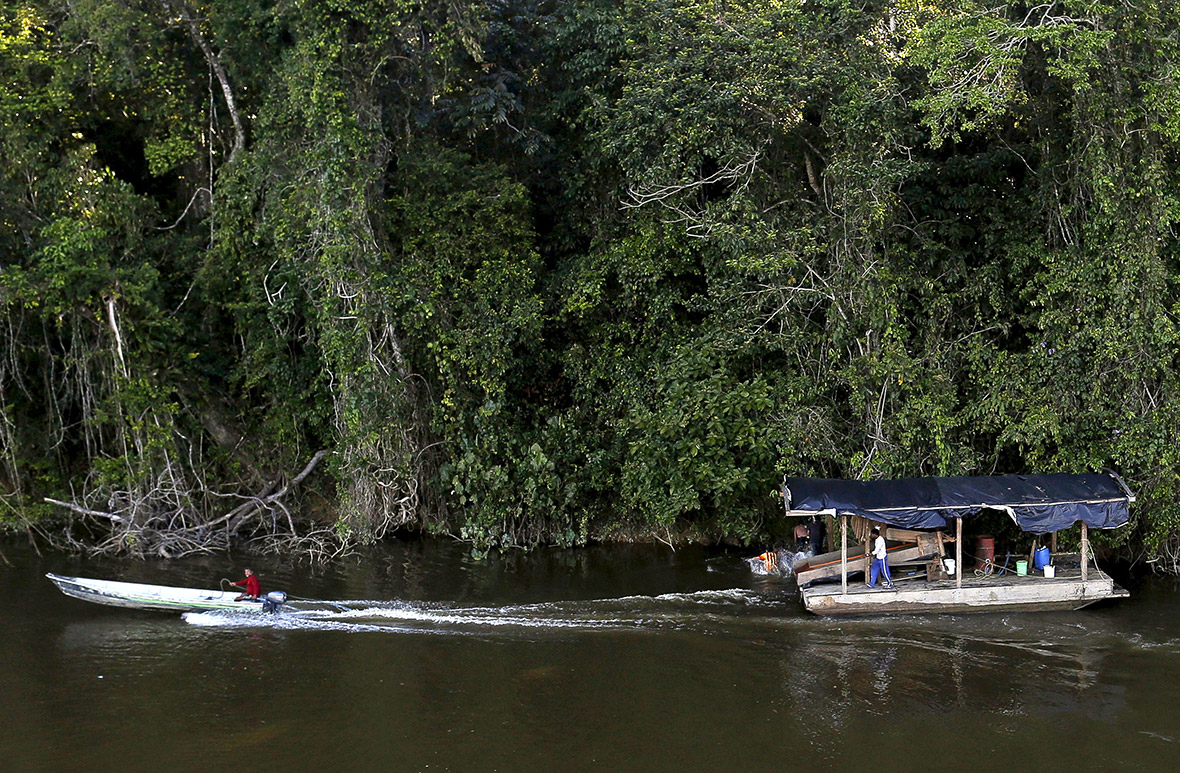Brazil: Armed officers and indigenous people burn down illegal gold mining camps in the Amazon rainforest
Illegal gold mining is destroying swathes of the Amazon rainforest, poisoning the river and the people who live along it. Gold was discovered along Brazil's border with Venezuela in the late 1970s, sparking the largest gold rush in history. The wildcat miners burned down trees and ripped away huge amounts of earth. They also brought with them diseases such as influenza and malaria which killed off thousands of indigenous people. About 10 tonnes of gold is extracted from the Amazon every year, accounting for 20% of Brazil's national gold production.
Reuters photographer Bruno Kelly trekked through the jungle with Brazilian environmental special forces during an operation to crack down on illegal miners.

They came across illegal gold mines on land belonging to the indigenous Yanomami people in the heart of the Amazon. The miners and gold were already gone, scattered by the noise of helicopters, but armed troopers burned their tents and generators. When there was nothing left, they moved on to the next camp.
The five-day operation, led by Brazil's environmental agency Ibama and Indian foundation Funai, located 15 air strips and destroyed 20 barges used by the estimated 5,000 illegal miners to transport equipment and supplies in the vast remote region. At more than 23.5 million acres (9.5 million hectares), the Yanomami people's territory is twice the size of Switzerland and home to around 27,000 indigenous people. The land has legally belonged to the Yanomami since 1992, but miners continue to exploit the area, sawing down trees and poisoning rivers with mercury in their lust for gold.
















The mercury has become a growing cause for concern. While miners once killed the Yanomami with guns or disease – nearly 20% of the population was wiped out in the 1980s – today the threat is the toxic liquid metal used to separate gold from grit. A study published in March 2016 by the Oswaldo Cruz Foundation, a public biomedical research group, found that in some Yanomami villages, 92% of residents suffered from mercury poisoning.
The results shocked experts, who believe mercury is entering the food chain through fish in polluted rivers. High mercury exposure harms the nervous, digestive and immune systems, can lead to impaired vision and hearing, and can be fatal.





The raid was considered a success but Ibama's operation leader Roberto Cabral said the miners would probably be back. "The aim is to destroy their equipment. We're not able to arrest them, there's no space in the helicopter," he told Reuters. When miners were caught, they were grilled for information and released. Beyond the equipment, authorities have been hunting for clues on the illicit business interests behind the miners.
The region's remoteness is a constant challenge. From a base in the Tepequém mountains on the frontier with Venezuela, three helicopters flew the 35-person team for an hour and a half to the banks of the majestic Uraricoera river. From there it was another hour or two on foot, cutting aside branches and wading through waist-high mud, to reach the mines. It is expensive and rare for the arm of the law to reach this far. It might become rarer still. With Brazil suffering its worst recession in a century, Funai's budget for 2016 was cut by 24%, while Ibama had its spending reduced by 30%.


Fiona Watson, who works for the activist group Survival International and has campaigned for the Yanomami since 1990, said any long-term solution must be based on having more people on the ground, graver punishments and a focus on those hiring the miners and supplying equipment. "These miners are like ants," Watson told Reuters. "They just keep coming back."
© Copyright IBTimes 2024. All rights reserved.






